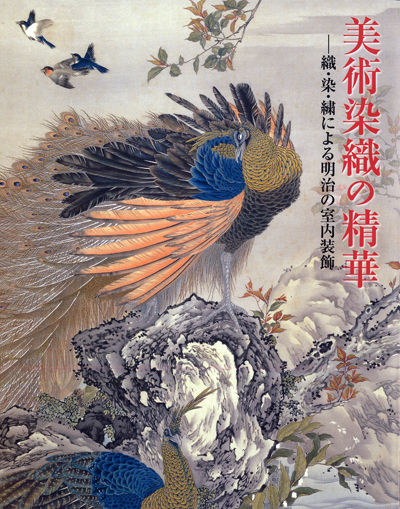| image | information |
|---|---|
 |
The development of our country's textile techniques richly adorned peoples' lives. Textiles used not only in garments, but also in various decorations, woven in various methods and dyed in beautiful colors, with embroidery and other ornamental techniques, have been used to create splendid works according to each period. Textiles showed a distinctive development during the Meiji era. In the new modern era, when western culture was introduced causing confusion, there were people who ambitiously rose to develop the modern textile industry, mainly in Nishijin, Kyoto. After learning techniques from France, and adopting machinery, they reformed these with our country’s traditional techniques to create new textiles. During this period, the textile works expressing pictorial scenes in hanging scrolls and framed forms exhibited in foreign and domestic exhibitions and expositions, were highly evaluated. Yuzen dyeing on velvet enabled by reformation of yuzen techniques, tsuzure-nishiki brocade learning from French Gobelin tapestry, and decorative embroidered work using traditional embroidery techniques, were among the most prominent, and Nishimura Sozaemon, Kawashima Jimbei, and Iida Shinshichi were the main figures active in the textile division. At the same time, the wall textiles and drop curtains used for interior decorations in the Meiji Palace, completed in 1888, activated the textile industry furthermore, and the production of textiles as decorations, or artistic textiles flourished. In this exhibition, we will introduce the various artistic textiles that decorated the Meiji Palace and other detached palaces. Because textiles often go through transition over time, colors have faded and surface deterioration can be seen, but it is surprising that so many works still exist. Through the high quality in textile techniques in these beautiful works, and the enthusiasm of those who produced them, we hope our visitors can see the wonderful revival of culture achieved by people's hands. |